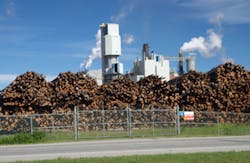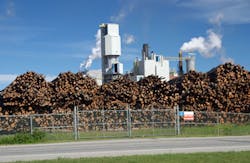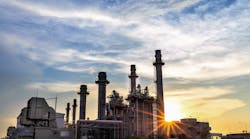A high water footprint and rising water prices have forced pulp and paper manufacturers to adopt water-efficient and high-end equipment for water and wastewater treatment, according to new analysis from Frost & Sullivan.
CEO 360 Degree Perspective on the Global Pulp and Paper Water and Wastewater Treatment Market finds the market earned revenues of more than $983.9 million in 2012 and estimates this to reach $1.57 billion in 2020.
The study shows that while developing countries offer the highest potential for pulp and paper-related water and wastewater treatment market expansion, largely based on greenfield project development, opportunities in mature regions, such as North America and Europe, will arise from the need to modernize existing facilities.
"Pulp and paper manufacturers are looking for advanced water and wastewater treatment technologies with an efficient energy rating and easy operation and maintenance," Frost & Sullivan Energy and Environmental Research Analyst Paulina Szyplinska said in an prepared statement. "Increasing dependence on water specialists to comply with tightening environmental standards and enhance operational efficiency has accelerated market growth."
Significant advances in closed-loop and minimal impact production facilities have added to market revenues, the study shows. Closed-loop systems are especially popular, as they enable the recycling and reuse of water as well as the recovery of excess pulp fibers in the wastewater.
In fact, pulp and paper manufacturers are switching from conventional treatment systems to more sophisticated solutions such as membranes to increase treatment levels and reduce the loss of raw materials, therefore the large-scale implementation of this zero-emission process is crucial to minimize the overall footprint of pulp and paper production.
"Continuous technological advancements and infrastructure improvements are vital to boost recycling rates," said Szyplinska. "Water and wastewater treatment equipment suppliers must provide a broad range of customized treatment technologies to appeal to various industrial end-users."
Research and development to design water and wastewater treatment technology that can address unique requirements and incorporate renewable energy initiatives will sustain the market in the long run, Frost & Sullivan says.



